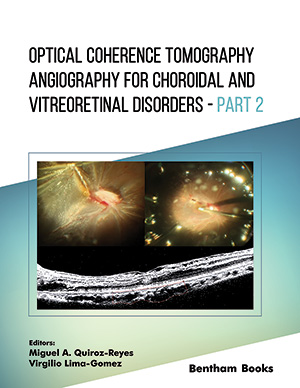Abstract
The World Health Organization (WHO) considers tuberculosis to be the most dangerous chronic communicable disease in the world, infecting two billion people or one-third of the world’s population. Tuberculosis (TB) caused by Mycobacterium tuberculosis remains a leading cause of mortality worldwide into the 21st century. Tuberculosis is second only to AIDS among other infectious diseases causing deaths worldwide. The emergence of AIDS, multidrug-resistant TB (MDRTB), extensively drug-resistant tuberculosis (XDR-TB), the decline of socioeconomic standards, and a reduced emphasis on tuberculosis control programmers contribute to the disease’s resurgence in industrialized countries.
Keywords: Phthisis, white plague, drug resistance, multidrug-resistant TB (MDR-TB), extensively drug-resistant tuberculosis (XDR-TB), fluoroquinolones (FQ), topoisomerases, phototoxicity.
[http://dx.doi.org/10.1016/S0366-0850(39)80016-3]
[http://dx.doi.org/10.1016/j.rmed.2006.08.006] [PMID: 16949809]
[http://dx.doi.org/10.1128/CMR.00042-10] [PMID: 21482729]
[http://dx.doi.org/10.1016/S0012-3692(15)50981-1] [PMID: 16840411]
[http://dx.doi.org/10.1016/0041-3879(77)90022-8] [PMID: 345572]
[http://dx.doi.org/10.4103/0970-2113.95320] [PMID: 22628930]
[http://dx.doi.org/10.1016/S0924-8579(00)00192-8] [PMID: 11185413]
[http://dx.doi.org/10.1093/jac/dkh377] [PMID: 15282233]
[http://dx.doi.org/10.1159/000057838] [PMID: 11549783]
[http://dx.doi.org/10.1021/bi5000564] [PMID: 24576155]
[http://dx.doi.org/10.1016/j.ijtb.2017.08.011] [PMID: 29332642]
[http://dx.doi.org/10.1038/sj.bjp.0705984] [PMID: 15644871]
[http://dx.doi.org/10.1021/cc020071p] [PMID: 12625709]
[http://dx.doi.org/10.1016/j.jpba.2004.11.036] [PMID: 15797803]
[http://dx.doi.org/10.1128/AAC.49.6.2294-2301.2005] [PMID: 15917524]
[http://dx.doi.org/10.1038/35016103] [PMID: 10879539]
[PMID: 25999726]
[http://dx.doi.org/10.1124/dmd.115.064550] [PMID: 26055621]
[http://dx.doi.org/10.1124/dmd.115.064527] [PMID: 26055620]
[http://dx.doi.org/10.1128/AAC.00509-16] [PMID: 27458223]
[http://dx.doi.org/10.1128/AAC.41.10.2127] [PMID: 9333036]
[http://dx.doi.org/10.1128/AAC.43.5.1189] [PMID: 10223934]
[http://dx.doi.org/10.1517/17425255.2015.1098617] [PMID: 26457865]
[http://dx.doi.org/10.2174/0929867323666151106125759] [PMID: 26549430]
[http://dx.doi.org/10.1016/S0022-2836(02)00784-2] [PMID: 12217690]
[http://dx.doi.org/10.1128/AAC.01291-16] [PMID: 27620476]
[http://dx.doi.org/10.1371/journal.pone.0120763] [PMID: 25794045]
[http://dx.doi.org/10.1021/acschembio.5b00237] [PMID: 25906160]
[http://dx.doi.org/10.1038/s41598-018-31316-6] [PMID: 30194385]
[http://dx.doi.org/10.1021/jm401382v] [PMID: 24215368]
[http://dx.doi.org/10.1016/j.drudis.2016.09.014] [PMID: 27666194]
[http://dx.doi.org/10.1016/j.compbiolchem.2013.08.006] [PMID: 24055764]
[http://dx.doi.org/10.1128/AAC.02404-19] [PMID: 31964791]
[http://dx.doi.org/10.1128/AAC.02418-20] [PMID: 33526488]
[http://dx.doi.org/10.3390/molecules26144280] [PMID: 34299555]
[http://dx.doi.org/10.1128/AAC.02496-18] [PMID: 31061157]
[http://dx.doi.org/10.1128/AAC.02155-18] [PMID: 30782992]
[http://dx.doi.org/10.1056/NEJMc1913327] [PMID: 32212527]
[http://dx.doi.org/10.1021/acsinfecdis.0c00025] [PMID: 32183511]
[http://dx.doi.org/10.1128/AAC.02469-20] [PMID: 33468478]






























